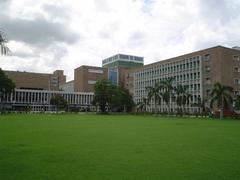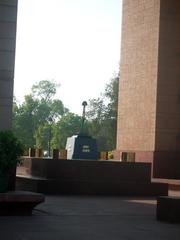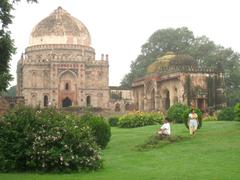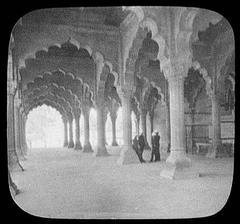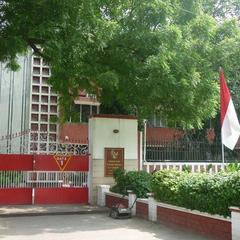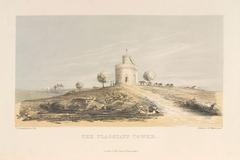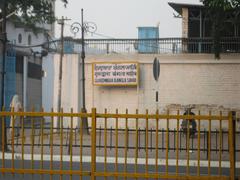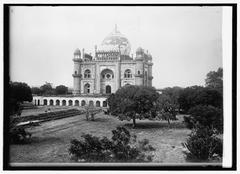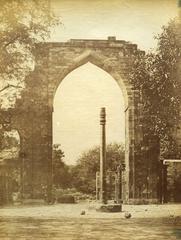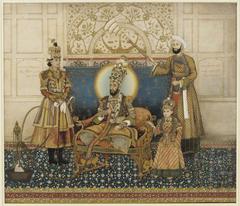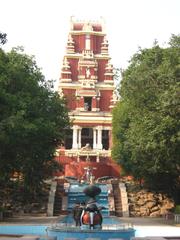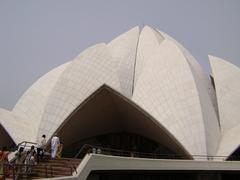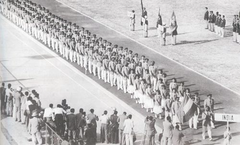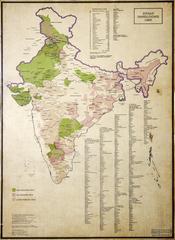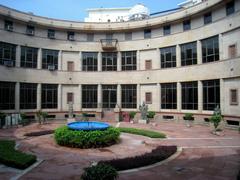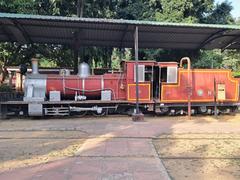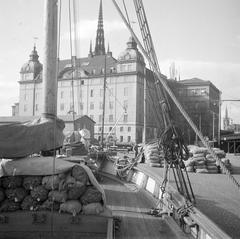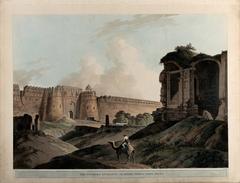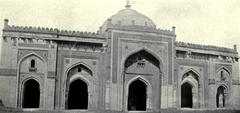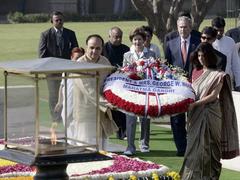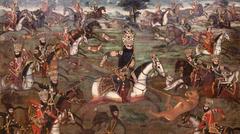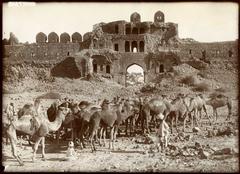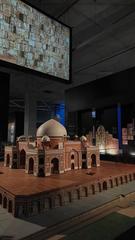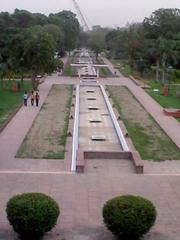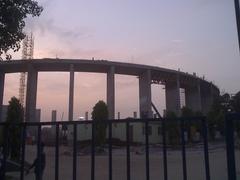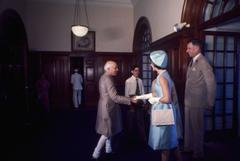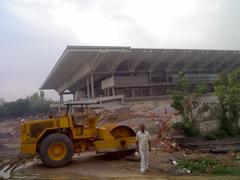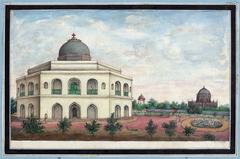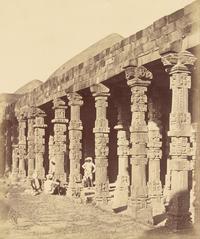Balban’s Tomb Visiting Hours, Tickets, and Historical Significance
Publication Date: 25/07/2024
Introduction to Balban’s Tomb
Balban’s Tomb, located within the serene confines of Mehrauli Archaeological Park in New Delhi, India, stands as a monument to the architectural and historical grandeur of the Delhi Sultanate. This fascinating site not only offers a deep dive into the history of Ghiyas ud din Balban—a notable ruler of the Delhi Sultanate who reigned from 1266 to 1287 CE—but also showcases the early development of Indo-Islamic architecture. The tomb marks one of the earliest uses of true arches and domes in Indian construction, a significant departure from the traditional trabeate (post-and-lintel) methods that were prevalent before the advent of Islamic rule (Britannica, Archnet).
Contents Overview
- Introduction
- The Legacy of Ghiyas ud din Balban
- Architectural Significance
- The Tomb’s Structure
- Historical Context
- Restoration Efforts
- Cultural Impact
- Visitor Experience
- Visiting Hours and Tickets
- Travel Tips
- Nearby Attractions
- Preservation Challenges
- Educational Importance
- FAQ
- Conclusion
The Legacy of Ghiyas ud din Balban
Ghiyas ud din Balban, originally named Ulugh Khan, was a prominent ruler of the Delhi Sultanate, reigning from 1266 to 1287 CE. Balban was a Turkic slave who rose to power through the ranks of the Mamluk dynasty, eventually becoming the Sultan of Delhi. His reign is noted for its strong centralized administration and efforts to consolidate the Sultanate’s power (Britannica).
Architectural Significance
Balban’s Tomb, located in the Mehrauli Archaeological Park in New Delhi, is a significant example of early Indo-Islamic architecture. Constructed in the late 13th century, the tomb is one of the earliest instances of the use of true arches and domes in Indian architecture. This architectural innovation marked a departure from the traditional trabeate (post-and-lintel) construction methods prevalent in India before the advent of Islamic rule (Archnet).
The Tomb’s Structure
The tomb is built using rubble masonry, a common construction technique of the period. The structure is relatively simple, consisting of a rectangular chamber with a pointed arch entrance. The use of the true arch in Balban’s Tomb is particularly noteworthy as it represents one of the earliest examples of this architectural feature in India. The tomb’s dome, although now collapsed, was also among the first of its kind in the region (ASI).
Historical Context
Balban’s reign was marked by significant political and military challenges. He is credited with strengthening the Sultanate’s defenses against Mongol invasions and consolidating its territories. His administrative reforms, including the establishment of a strong spy network and a centralized bureaucracy, laid the foundation for the future stability of the Delhi Sultanate (History Today).
Restoration Efforts
Over the centuries, Balban’s Tomb has suffered from neglect and the ravages of time. However, recent restoration efforts by the Archaeological Survey of India (ASI) have aimed to preserve this historical monument. These efforts include structural reinforcements and the conservation of the remaining architectural elements. The restoration work is crucial for maintaining the tomb’s historical and architectural integrity (ASI).
Cultural Impact
Balban’s Tomb holds significant cultural and historical value as it represents the early phase of Indo-Islamic architecture in India. The tomb is a testament to the architectural innovations introduced during the Delhi Sultanate period, which would later influence the construction of more elaborate structures such as the Qutub Minar and the Alai Darwaza (Cultural India).
Visitor Experience
Visitors to Balban’s Tomb can explore the Mehrauli Archaeological Park, which houses several other historical monuments, including the Jamali Kamali Mosque and Tomb, and the Rajon Ki Baoli. The park provides a serene environment for visitors to appreciate the historical and architectural significance of these structures. Information boards and guided tours are available to enhance the visitor experience.
Visiting Hours and Tickets - Balban’s Tomb is open from 9 AM to 5 PM daily. Entry is free, but guided tours may have a nominal fee.
Travel Tips - It’s best to visit in the early morning or late afternoon to avoid the midday heat. Wear comfortable walking shoes as the park is extensive.
Nearby Attractions - Other sites in the Mehrauli Archaeological Park include the Qutub Minar and the Alai Darwaza, both within walking distance.
Preservation Challenges
Despite restoration efforts, Balban’s Tomb faces ongoing preservation challenges. Environmental factors, such as pollution and weathering, continue to pose threats to the structure. Additionally, the tomb’s location within an urban setting exposes it to the risk of encroachment and vandalism. Continuous monitoring and maintenance are essential to ensure the long-term preservation of this historical monument (The Hindu).
Educational Importance
Balban’s Tomb serves as an important educational resource for historians, architects, and students. It provides insights into the early development of Indo-Islamic architecture and the historical context of the Delhi Sultanate. Educational programs and heritage walks organized by various cultural organizations help raise awareness about the tomb’s significance and promote its preservation (INTACH).
FAQ
Q - What are the visiting hours for Balban’s Tomb?
A - Balban’s Tomb is open daily from 9 AM to 5 PM.
Q - Is there an entry fee for Balban’s Tomb?
A - Entry to Balban’s Tomb is free, though guided tours may have a nominal fee.
Q - What should I wear when visiting Balban’s Tomb?
A - It’s recommended to wear comfortable walking shoes as the park is extensive.
Q - What other attractions are nearby Balban’s Tomb?
A - Nearby attractions include the Qutub Minar and the Alai Darwaza, both located within the Mehrauli Archaeological Park.
Conclusion
Balban’s Tomb is not merely a historical monument but a testament to the enduring legacy of Ghiyas ud din Balban and the architectural innovations of the Delhi Sultanate period. Despite the ravages of time and environmental challenges, the tomb remains a significant educational resource and a cultural treasure. The site’s early use of true arches and domes has had a lasting impact on Indo-Islamic architecture, influencing subsequent constructions like the Qutub Minar and the Alai Darwaza (ASI, Cultural India). As visitors stroll through the Mehrauli Archaeological Park, they can not only explore Balban’s Tomb but also several other historical monuments, each contributing to the rich tapestry of Delhi’s past. Continuous preservation efforts are crucial to maintaining the structural integrity and historical significance of this monument. By visiting Balban’s Tomb, one gains a deeper appreciation for the architectural and cultural heritage of medieval India, making it a must-visit for history enthusiasts and travelers alike.
Sources and Further Reading
- Ghiyas ud din Balban, 2024, Encyclopedia Britannica source
- Balban’s Tomb, 2024, Archnet source
- Delhi Sultanate, 2024, History Today source
- Balban’s Tomb, 2024, Archaeological Survey of India source
- Balban’s Tomb, 2024, Cultural India source
- Balban’s Tomb, 2024, Delhi Tourism source
- Balban’s Tomb, 2024, Delhi Information source
- Balban’s Tomb, 2024, Atlas Obscura source
- Mehrauli Archaeological Park, 2024, Vacation India source
- Mehrauli Archaeological Park, 2024, Hello Mehrauli source

